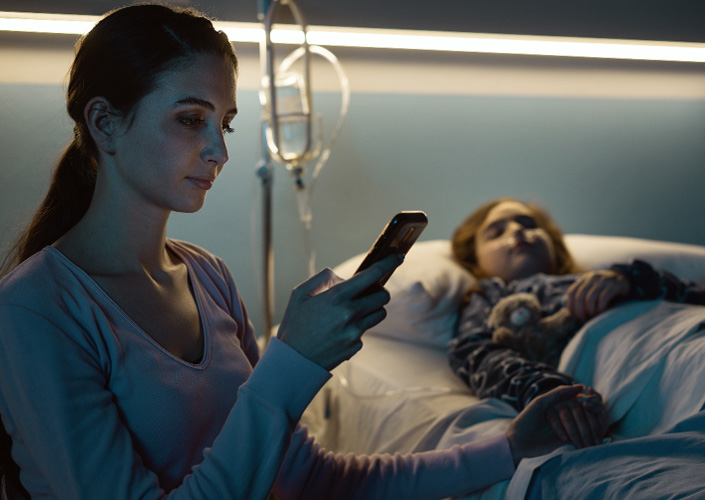
FEBRUARY 25, 2022
…
A hospital is a place to make people better. But just being in a hospital can make people feel worse.
We’re biologically wired1 to react in unfamiliar environments with a heightened level of stress.
That stress often triggers a fight-or-flight response2 — but patients in a hospital aren’t in a condition to fight or flee.
That sense of lack of control can escalate into more anxiety, negatively affecting3 their physical health even more.
So what can you do when your hospital — an environment of treatment and healing — may be impacting your patients’ mental and emotional health?
Distract them.
This doesn’t mean keeping them in the dark. (Informed and engaged patients are crucial4 to quality care.)
It means you can — and should — provide patients with comforting, personal, positive distraction options.
Positive distraction can be a soothing song. A favorite movie. A show they were binging before they came to the hospital.
The psychological benefits of positive distraction
When someone is in an unfamiliar place, a familiar routine can bring a sense of normalcy and relaxation.
Having access to choose what those small moments of comfort are can give patients a sense of control in a place where they otherwise feel helpless.
Positive distractions can also:
- Reduce patient anxiety, even if all they’re doing is waiting5
- Help patients experience less pain6
- Prevent a spiral of negative emotions7
- Boost positive emotions, which help patients cope8 with the situation of being at your hospital
Caring for patients physically and emotionally
The physical care for your patients is the focus during their stay, but emotional and mental care is equally as important and should not be overlooked.
A new mom whose world has forever changed at your hospital may crave the familiarity of her favorite music to keep her grounded.
A person anxiously awaiting to hear if the surgery was a success may need a show that can completely shift their attention away from fear and uncertainty.
A family gathered to comfort their loved one during treatment may welcome a choice of games to bond over.
A child confused and in pain may find that a beloved cartoon makes it a little bit better.
What your patients choose to distract themselves with is secondary to making sure the options are there — because it’s not just entertainment or a secondary amenity, it’s a proven way to help them feel better.
Editor’s note: This article was originally published in October 2019. It has been updated for freshness and comprehensiveness.
Stay connected
Get exclusive insights delivered to your inbox from our experts.
 By SONIFI Health
By SONIFI Health 
